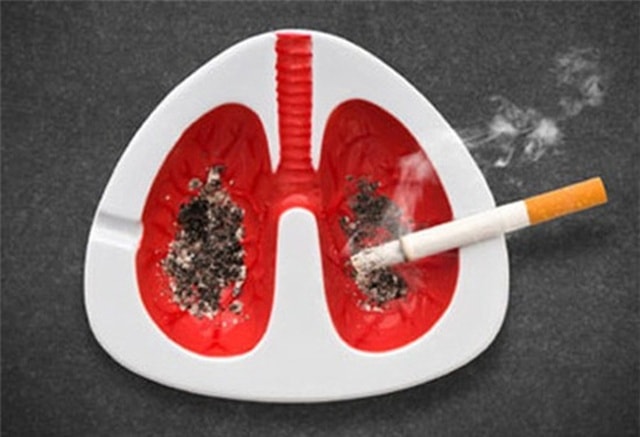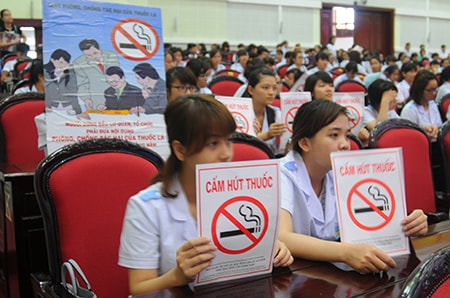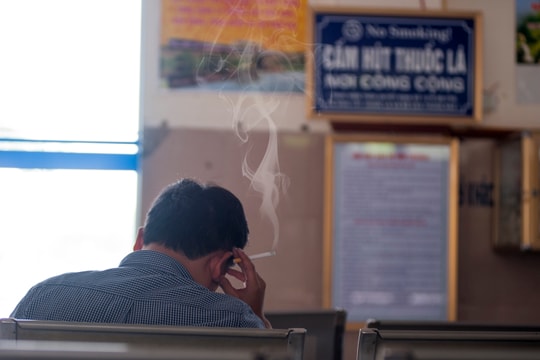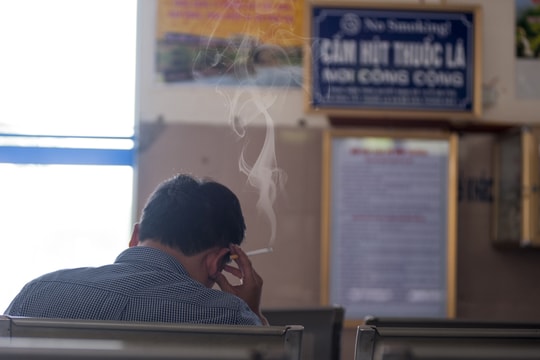In the 21st century, the number of people who die from tobacco could reach 1 billion people.
(Baonghean.vn) - For this year's World No Tobacco Day, the World Health Organization (WHO) chose the theme "Tobacco - a threat to the sustainable development of countries", referring to the health and economic losses, the negative impacts on sustainable development goals globally as well as in each country caused by tobacco use.
1. Tobacco kills nearly 6 million people each year
 |
| The number of people dying from tobacco could reach 1 billion in the 21st century. |
According to the World Health Organization (WHO), tobacco is the leading cause of death worldwide and the leading preventable cause of death. Every year, tobacco kills nearly 6 million people, including more than 5 million current and former smokers, and more than 600,000 non-smokers who are exposed to secondhand smoke.
In the 20th century, tobacco killed 100 million people. WHO has warned that if effective tobacco control measures are not implemented immediately, the annual number of deaths from tobacco could increase to more than 8 million by 2030, and in the 21st century the number of deaths from tobacco could reach 1 billion.
Global tobacco consumption is increasing, despite a decline in tobacco consumption in some high- and middle-income countries. And the risk of tobacco-related deaths remains alarming. Not to mention, the cost of tobacco-related diseases, in developed countries, accounts for 6-15% of total health expenditure.
2. The dangerous effects of tobacco
 |
| Smoking causes many diseases, of which the rate of lung cancer patients due to smoking accounts for 96.8%. |
Cigarette smoke contains more than 4,000 chemicals, of which more than 200 are harmful to health and more than 40 are carcinogenic. Nicotine in cigarettes directly affects the brain of smokers. This substance enters the lungs and then circulates in the blood, and can affect the brain just 7 seconds later.
- Smoking is the cause of many types of cancer such as: lung cancer, esophageal cancer, laryngeal cancer, oral cancer, kidney and bladder cancer, anal and rectal cancer, genital cancer... 90% of lung cancer cases in the world are direct smokers and 5% of lung cancer cases are indirect.
- Smoking increases the risk of cardiovascular disease by 2-3 times. Cigarette smoke can cause arrhythmia and high blood pressure. Smoking increases the risk of morbidity and mortality from coronary artery disease, atherosclerosis, myocardial infarction, peripheral vascular disease, stroke, etc. In addition, smoking also reduces the effectiveness of antihypertensive drugs.
 |
| In France, 66,000 people die each year from tobacco, of which 27,000 are from lung cancer (85% are due to tobacco). |
- Cigarette smoking is the leading cause of chronic obstructive pulmonary disease. Smoking does not cause asthma attacks, but it makes asthma worse. The mortality rate in asthmatics who smoke or have smoked is more than twice that of non-smokers. Smokers are more likely to have respiratory infections than non-smokers, and they are often more severe.
- Smoking reduces fertility and increases the risk of infertility in both men and women. Smoking increases the risk of miscarriage, stillbirth, premature birth, low birth weight, and birth defects in children...
- Passive smokers have a higher risk of lung cancer than those who do not inhale cigarette smoke. Non-smokers who marry smokers have a 20% higher risk of dying from lung cancer than those who marry non-smokers.
- Children who inhale cigarette smoke are at risk of respiratory diseases, otitis media, increased risk of asthma attacks and severity of asthma. In addition, cigarette smoke affects children's intellectual development. Children of smokers often have cognitive difficulties, behavioral disorders and reduced learning ability.
3. Statistics in Vietnam
 |
| Vietnam is among the 15 countries with the highest number of smokers in the world. Illustrative photo. |
In Vietnam, tobacco-related diseases are the leading cause of death in Vietnam, causing around 40,000 deaths each year – that’s more than 100 people dying from tobacco every day. Without urgent intervention, the estimated number of deaths from tobacco-related diseases each year will increase to 70,000 by 2030.
The latest survey results show that Vietnam is among the countries with the highest rate of tobacco use in the world, with 45.3% of men smoking. This is the information at the Workshop to disseminate the results of the Survey on Tobacco Use among Adults in Vietnam (GATS 2015).
In recent years, the average amount of money Vietnamese people spend on cigarettes is 31,000 billion VND/year. Spending on cigarettes reduces other essential household expenses, especially for low-income households. A survey on household living standards shows that poor households in Vietnam have to spend up to 5% of their family income on cigarettes.
4. Strengthening the enforcement of the Law on Tobacco Harm Prevention
The World Health Organization (WHO) has chosen the theme of this year's World No Tobacco Day as "Tobacco - a threat to the sustainable development of countries". Through this, WHO calls on countries to prioritize promoting activities to prevent the harmful effects of tobacco in programs to implement the sustainable development goals by 2030. At the same time, it encourages the wide participation of organizations and individuals in activities to prevent the harmful effects of tobacco.
 |
| Strengthening the dissemination of regulations of the Law on Tobacco Harm Prevention and Control. Illustrative photo. |
In Vietnam, in order to implement the Law on Tobacco Harm Prevention and respond to World No Tobacco Day on May 31, 2017, the Minister of Health issued Document No. 2379/BYT-KCB requesting provinces and cities to strengthen the implementation of this work.
According to the Ministry of Health, in addition to launching activities in response to the National No Tobacco Week from May 25 to 31, the Ministry of Health has requested provinces and cities to continue directing departments, branches and sectors to step up propaganda of the provisions of the Law on Prevention of Tobacco Harms.
In particular, focusing on propagating regulations prohibiting smoking in workplaces, schools, medical facilities, hotels... At the same time, the Ministry of Health requires provinces and cities to establish interdisciplinary teams to inspect the posting of no-smoking signs, compliance with regulations prohibiting smoking in prohibited locations, thereby, strictly punishing according to Decree No. 176 on administrative sanctions in the health sector.
Peace
(Synthetic)
| RELATED NEWS |
|---|








